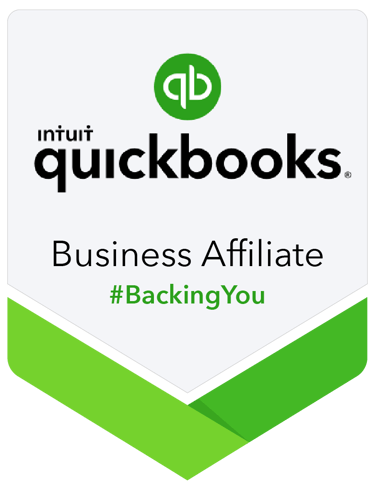Quarterly Taxes for Small Business: Complete Guide 2025
Learn who needs to pay quarterly taxes, how to calculate payments, and why good bookkeeping makes compliance effortless.
TAX INFORMATION
Jerry Blanco
6/28/20254 min read


Why Missing Quarterly Tax Payments Could Cost You More Than Money—And How Simple Bookkeeping Prevents Financial Stress
Picture this: You're crushing it in your business. Sales are up, clients are happy, and you're finally seeing the fruits of your entrepreneurial labor. Then April rolls around, and you get hit with a massive tax bill—plus penalties for not making quarterly payments you didn't even know you needed to make.
Sound familiar? You're not alone. Quarterly taxes catch thousands of small business owners off guard every year, but they don't have to catch you.
Let's break down everything you need to know about quarterly taxes in plain English, so you can focus on growing your business instead of worrying about tax surprises.
What Are Quarterly Taxes, Really?
Think of quarterly taxes like a payment plan for your annual tax bill. Instead of owing the IRS one giant lump sum in April, you spread your tax payments across four smaller chunks throughout the year.
Here's the simple truth: The IRS wants their money as you earn it, not a year later. If you're making money as a business owner, they expect you to pay taxes on that income every three months.
The four quarterly due dates are:
Q1: April 15 (for January-March income)
Q2: June 15 (for April-May income)
Q3: September 15 (for June-August income)
Q4: January 15 (for September-December income)
Notice how these aren't exactly three months apart? Yeah, the IRS has their own calendar logic. Just roll with it.
Do You Actually Need to Pay Quarterly Taxes?
Not every business owner needs to make quarterly payments, but most do. Here's the deciding factor: If you expect to owe $1,000 or more in taxes when you file your return, you need to make quarterly payments.
You're Likely On the Hook If You're:
A sole proprietor or single-member LLC
A freelancer or independent contractor
A partner in a partnership
Running any business where taxes aren't automatically withheld from your income
You Might Get a Pass If:
You're an employee of your own S-Corp (because you're paying payroll taxes)
Your business is brand new and you don't expect significant profits
You paid enough tax last year to cover this year's "safe harbor" amount (more on this below)
The key thing to remember: If you're making money in your business and nobody else is withholding taxes for you, the IRS expects you to do it yourself.
How to Estimate Your Quarterly Payments (Without Losing Your Mind)
Estimating quarterly taxes doesn't require a crystal ball—just some basic math and realistic projections.
Method 1: The Safe Harbor Rule (The Conservative Approach)
This is the "sleep well at night" method. Pay 100% of what you owed in taxes last year, divided by four. If your adjusted gross income was over $150,000 last year, you need to pay 110% of last year's tax.
Example: If you owed $8,000 in taxes last year, your quarterly payments would be $2,000 each ($8,000 ÷ 4).
The beauty of safe harbor? Even if you make more money this year, you won't face penalties as long as you pay this amount. You'll just owe the difference when you file your return.
Method 2: Current Year Projection (The Aggressive Approach)
This method requires you to estimate your current year's income and calculate 90% of the expected tax owed, divided by four.
Here's how to do it:
Project your annual business income
Subtract your business deductions
Calculate your expected tax (don't forget self-employment tax!)
Multiply by 90% and divide by four
This method can save you money if your income is lower this year, but it's riskier because you're guessing at future income.
Method 3: The Hybrid Approach (The Practical Choice)
Many smart business owners combine both methods. They start with safe harbor payments early in the year, then adjust their final quarters based on actual income trends.
What Happens If You Don't Pay (Spoiler: It's Not Pretty)
The penalties for missing quarterly payments aren't just about the money—they compound your stress and complicate your finances.
Financial Penalties Include:
Underpayment penalties: Currently around 8% annually
Interest on unpaid amounts: Compounds daily
Late payment penalties: If you miss the deadline entirely
Hidden Costs Include:
Emergency scrambling to find cash for large tax bills
Stress affecting your business decision-making
Time spent dealing with IRS notices instead of growing your business
Damaged cash flow planning
The worst part? These penalties apply even if you're getting a refund when you file your return. The IRS doesn't care that you overpaid for the year—they care that you underpaid each quarter.
How Proper Bookkeeping Makes Quarterly Taxes Effortless
Here's where many small business owners get tripped up: They try to handle quarterly taxes without proper bookkeeping systems. It's like trying to navigate without a map.
Good Bookkeeping Gives You:
Real-Time Income Tracking: You always know how much you've made, so you can calculate taxes owed accurately.
Expense Organization: Proper categorization means you don't miss deductions that reduce your tax liability.
Cash Flow Visibility: You can see if you have enough cash to make quarterly payments without jeopardizing operations.
Automated Calculations: With the right systems, your quarterly tax liability gets calculated automatically as you record transactions.
The Bookkeeping Essentials for Quarterly Tax Success:
Separate Business Banking: Never mix business and personal transactions
Monthly Reconciliation: Catch errors before they become tax problems
Expense Categorization: Every business expense properly classified
Income Tracking: All revenue recorded when earned, not just when paid
Tax Savings Account: Set aside tax money with every payment received
Your Quarterly Tax Action Plan
Ready to take control? Here's your step-by-step action plan:
Step 1: Determine Your Payment Method
Choose safe harbor, current year projection, or hybrid based on your risk tolerance and income predictability.
Step 2: Set Up Automated Systems
Open a separate "tax savings" account
Set up automatic transfers after each payment received
Use bookkeeping software that calculates tax estimates
Step 3: Mark Your Calendar
Put those quarterly due dates in your calendar with alerts. Treat them like important client meetings—because they are.
Step 4: Review and Adjust
After each quarter, review your actual income against projections. Adjust your remaining payments if needed.
Step 5: Prepare for Year-End
Good quarterly payments make annual tax filing much smoother and less stressful.
The Bottom Line: Quarterly Taxes Don't Have to Be Scary
Quarterly taxes are just another part of running a successful business. With proper planning and good bookkeeping, they become routine rather than stressful.
The key is treating them like any other recurring business expense—budget for them, plan for them, and handle them systematically.
Remember: The goal isn't perfection; it's compliance and peace of mind. You don't need to get your estimates exactly right. You just need to pay enough to avoid penalties and keep the IRS happy.
When your bookkeeping is solid and your quarterly payments are on track, you can focus on what you do best: growing your business and serving your customers.


